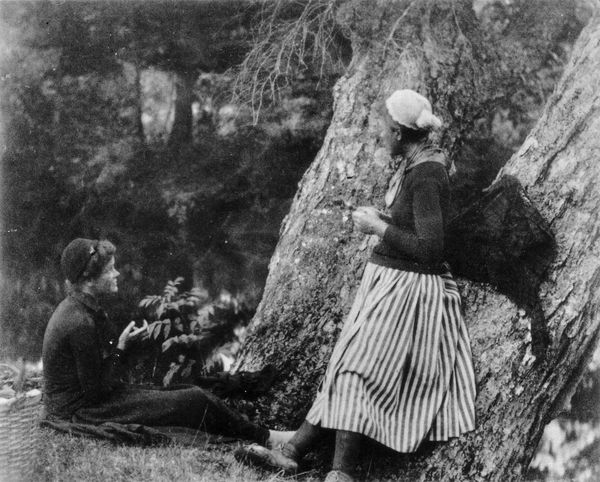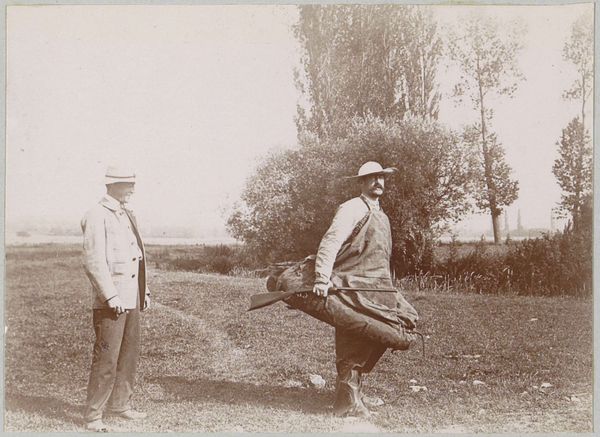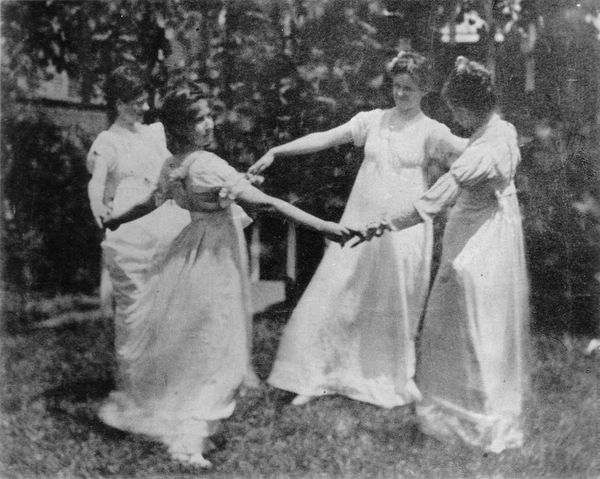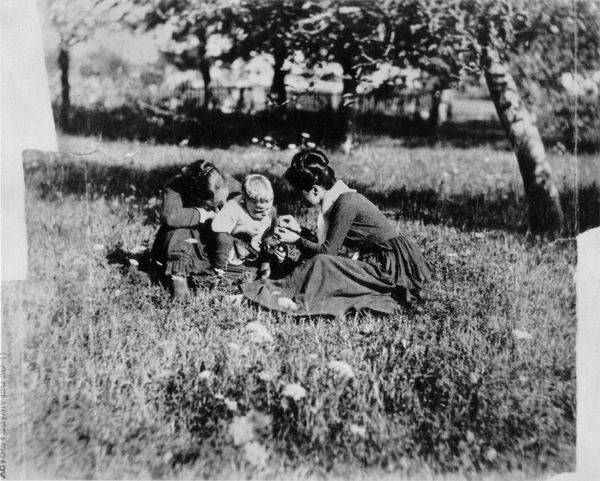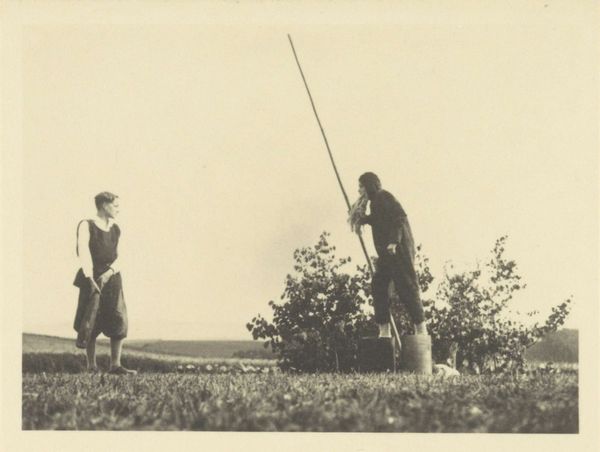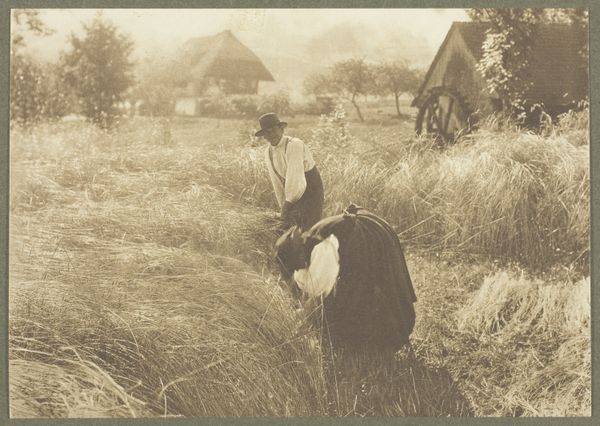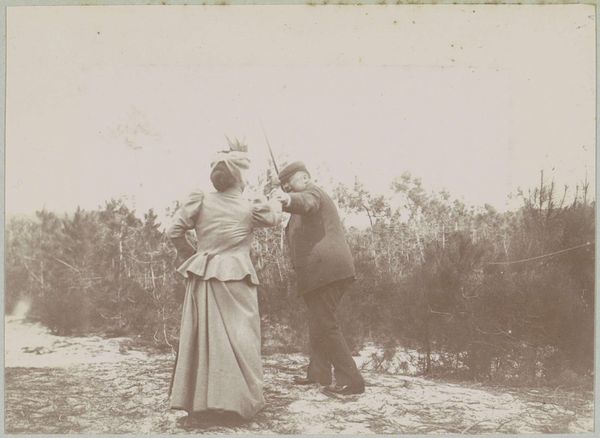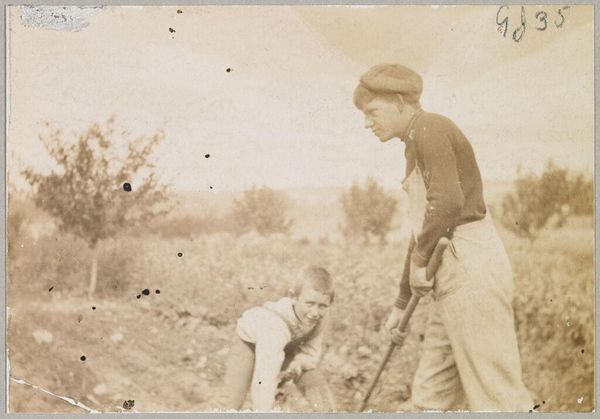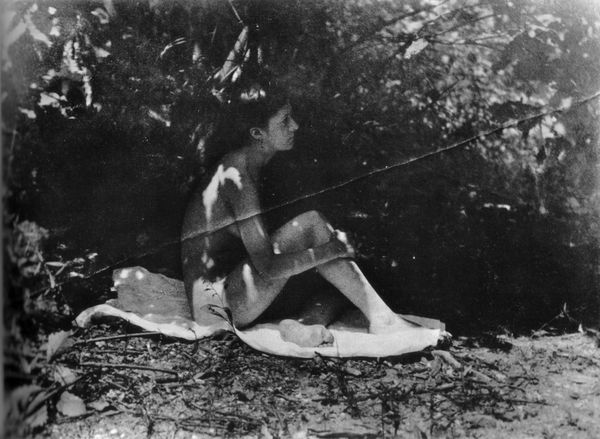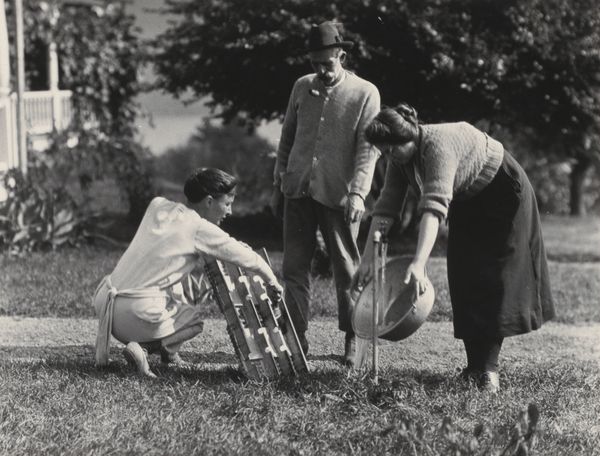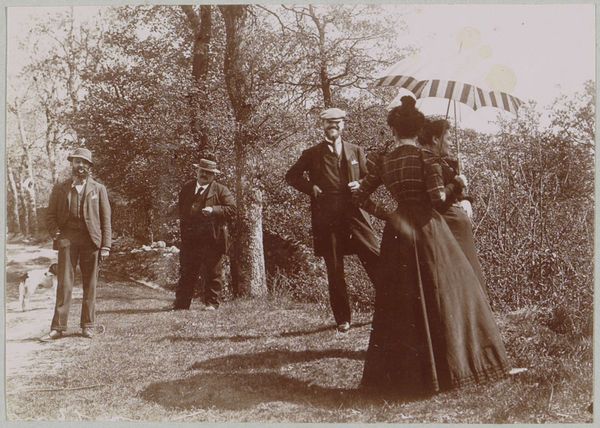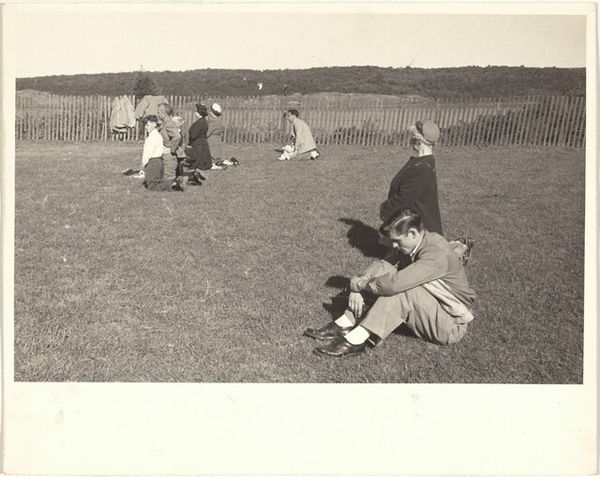
Copyright: Public domain
Curator: What strikes me immediately is the strange feeling of a half-remembered dream. There’s something both intimate and unsettling about this. Editor: That's quite an opening! Well, for our listeners, we are looking at a photograph from around 1910. The artist, Thomas Eakins, captured this on a gelatin silver print, a common process during the late 19th and early 20th centuries known for its ability to render fine detail. Curator: I think that ethereal quality you mentioned really contributes to its allure. It’s like looking through a veil; everything’s softened, edges blurred. It lends the subjects a certain timeless quality, even though we know it's anchored to a particular moment. What I love are the subtle details, the textures of their clothing, the light on their faces. Editor: Right. I’m fascinated by the choices in the process itself. Gelatin silver printing involved coating paper with a light-sensitive emulsion. Then you would use negatives to project the image. You're using specific materials and technical expertise, turning labor and commodity into art. The paper, the chemicals, the skill – each aspect a decision contributing to the final product. And then of course this whole notion of portraiture and how it gets reconfigured. Curator: Exactly! The two figures present feel somehow caught in the act of being observed, perhaps in play? Are they collaborating on something unseen in that grassy expanse or caught unawares in this space between a gesture and action? The woman reaching into that expanse—that is her hand—reaching out? What an act of discovery she has undertaken here. What can you gather in this gelatin ground between figures? Editor: True, Eakins wasn’t just documenting; he was manipulating perception, emphasizing texture through the process and making choices about composition to draw us in to contemplate. If only we knew whether they are posing or actually doing whatever gesture. Curator: Perhaps its best we never will, though! Knowing diminishes imagination, I suspect. The lack of resolution, actually enhances its mystery, allowing it to transcend its materiality. What’s your lasting thought? Editor: Well, I think Eakins cleverly shows how technological methods, from lens to print, always frame how we see even a so-called straightforward subject. It's still about making rather than simply representing. What about you? Curator: I’m struck again by that interplay between sharpness and softness, it's almost as if the past itself has begun to dissolve before our very eyes. The photograph breathes between the concrete and something more otherworldly.
Comments
No comments
Be the first to comment and join the conversation on the ultimate creative platform.
